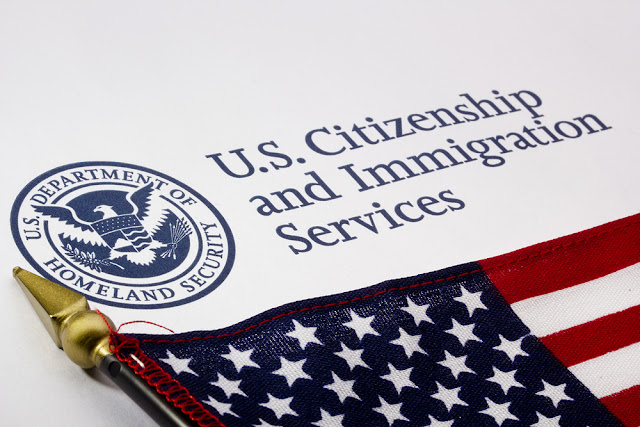Introduction to Provisional Unlawful Presence Waivers
The provisional unlawful presence waiver was originally created in regulations in 2013. A new provisional unlawful presence waiver final rule will take effect on August 29, 2016. The new rule will generally broaden the number of people who will be able to seek and be granted provisional unlawful presence waivers. This article will examine the new regulatory scheme.
The provisional unlawful presence waiver allows for certain beneficiaries of approved immigrant visa petitions to apply for a provisional unlawful presence waiver before proceeding abroad to apply for an immigrant visa through the Department of State (DOS). A provisional unlawful presence waiver only applies to inadmissibility under section 212(a)(9)(B)(i) of the Immigration and Nationality Act (INA) for the 3- and 10-year unlawful presence bars. It does not provisionally waive any other ground of inadmissibility.
The concept of the waiver is that, if approved, it may greatly shorten the visa application process for a waiver beneficiary and help promote family unity. It is important to note that the granting of a provisional unlawful presence waiver still requires an alien to proceed abroad to seek a visa from the DOS. An alien who is granted a provisional unlawful presence waiver will not be eligible for adjustment of status.
Furthermore, if the beneficiary of a provisional unlawful presence waiver is found to be ineligible for an immigrant visa for reasons other than for being subject to a 3- or 10-year bar of inadmissibility, the provisional unlawful presence waiver will become moot and the applicant would have to apply for a waiver of the unlawful presence bar from overseas.
Eligibility for Provisional Unlawful Presence Waivers
First, an alien must be the beneficiary of an approved immigrant visa petition in one of the following categories:
- Family-sponsored;
- Employment-based; or
- Diversity visa.
Secondly, the alien must be subject to the 3- or 10-year bar of inadmissibility for unlawful presence. This is important because the provisional unlawful presence waiver only applies to inadmissibility for the 3- or 10-year bars. It is important to note that the provisional unlawful presence waiver cannot waive inadmissibility stemming from the permanent bar, which is triggered by having been subject to the 10-year bar of inadmissibility and then attempted to reenter without being admitted or paroled.
In order to be granted a provisional unlawful presence waiver, an applicant must demonstrate that the refusal of his or her admission would result in “extreme hardship” to a:
- U.S. citizen spouse;
- U.S. citizen parent;
- LPR spouse; or
- LPR parent.
Although a provisional unlawful presence waiver will be revoked if an alien is found to be inadmissible on other grounds or otherwise ineligible for the visa being sought by the DOS, the United States Citizenship and Immigration Services (USCIS) have abandoned the “reason to believe” that the alien may be inadmissible on other grounds standard. Under the previous regulatory scheme, the USCIS could deny a provisional unlawful presence waiver application if it had reason to believe that the alien was inadmissible on other grounds. Under the new rules, the USCIS will only consider whether the applicant satisfied the extreme hardship to a qualifying relative requirement and whether he or she merits a favorable exercise of discretion.
Application for a Provisional Unlawful Presence Waiver
The provisional unlawful presence waiver process begins with the filing of the Form I-601A, Application for Provisional Unlawful Presence Waiver. An applicant must meet the following requirements in order to file and have approved Form I-601A:
- Be at least 17 years of age;
- Be present in the United States at the time of the filing of the application;
- Have a pending case before the DOS based on an approved immigrant visa petition for which the processing fee has been paid (or based on selection to participate in the Diversity Visa program for the fiscal year for which he or she registered);
- Must intend to depart after being granted a provisional unlawful presence waiver in order to apply for an immigrant visa with the DOS;
- Must meet the requirements for an unlawful presence waiver.
An alien who is in removal proceedings may not be granted a provisional unlawful presence waiver. An alien who is subject to an administratively final order of removal, deportation, or exclusion must have filed and had approved a Form I-212, Application for Permission to Reapply for Admission in order to apply for a provisional unlawful presence waiver.
The alien must submit any and all required biometrics with his or her application and pay the requisite fees. If the alien is not thorough in filing his or her application, the application will be denied.
The alien carries the burden of proof of establishing that he or she is eligible for a provisional unlawful presence waiver and that he or she merits a favorable exercise of discretion.
Approval or Denial
If approved, the provisional unlawful presence waiver does not take effect until the alien departs from the United States, appears for an immigrant visa interview with DOS, and is determined to be otherwise eligible for an immigrant visa. The petition will be automatically revoked if the applicant is found to be ineligible for the immigrant visa for which he or she obtained a provisional unlawful presence waiver. If the petition is still valid, the applicant may apply for an unlawful presence waiver abroad. If the alien attempts to reenter the United States without inspection and admission or parole at any time before obtaining an immigrant visa, the provisional unlawful presence waiver will be revoked.
If the provisional unlawful presence waiver application is denied, it will be denied without prejudice to a subsequent application for a provisional unlawful presence waiver or unlawful presence waiver. However, the applicant must establish eligibility from scratch in any subsequent applications.
Conclusion
The provisional unlawful presence waiver expedites the visa application process for a qualifying individual who would only be ineligible for an immigrant visa based on the 3- or 10-year bar of inadmissibility. Any immigrant visa applicant who may be subject to the 3- or 10-year bar should consult with an experienced immigration attorney before taking action. An experienced immigration attorney will be able to assess the situation and determine whether applying for a provisional unlawful presence waiver may be beneficial given the facts of the specific situation.
Please visit the nyc immigration lawyers website for further information. The Law Offices of Grinberg & Segal, PLLC focuses vast segment of its practice on immigration law. This steadfast dedication has resulted in thousands of immigrants throughout the United States.
Resources and materials:
Alexander J Segal - "Provisional Unlawful Presence Waivers (Rules Taking Effect August 29, 2016)", "New Final Rule on Provisional Unlawful Presence Waivers"
Lawyer website: http://myattorneyusa.com






